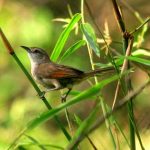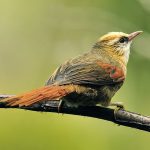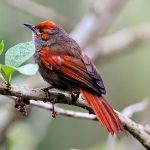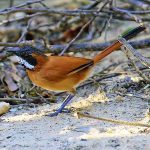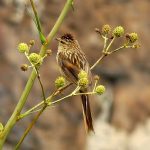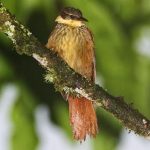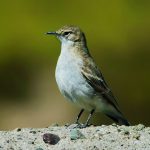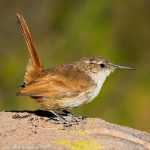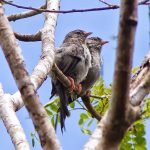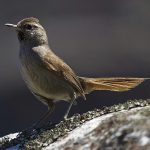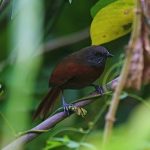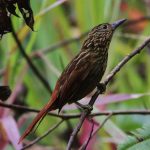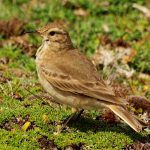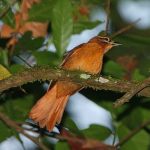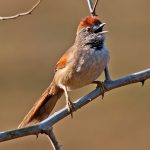Bay-capped wren-spinetail
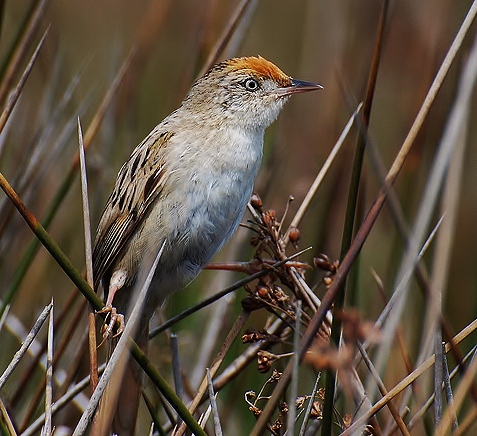
 |
| Photo by Carlos Schwertner (Flickr) |
Common name:
bay-capped wren-spinetail (en); boininha (pt); synallaxe des marais (fr); canastero enano (es); strichelrücken-dickichtschlüpfer (de)
Taxonomy:
Order Passeriformes
Family Furnariidae
Range:
This South American species is found from the southernmost tip of Brazil, through Uruguay and into eastern a central Argentina.
Size:
These birds are 14 cm long and weigh 10-12 g.
Habitat:
The bay-capped wren-spinetail is mostly found in brackish and freshwater marshes with extensive growths of Eryngium and Scirpus, and may associate with Spartina grass. They are present from sea level up to an altitude of 900 m.
Diet:
These birds are insectivorous, gleaning various arthropods from marsh vegetation and grasses.
Breeding:
Bay-capped wren-spinetails breed in September-January. Both sexes build the nest, a rudimentary enclosed structure made of twigs and grasses, placed near the ground deep inside sedges and rushes. The female lays 2-4 eggs which are incubated by both sexes for 13 days. The chicks are fed by both parents and fledge 11-14 days after hatching.
Conservation:
IUCN status – NT (Near-threatened)
This species has a very large breeding range and is described as fairly common. The population is suspected to be declining slowly as a result of on-going drainage and conversion of wetland habitats, as well as the drying effects of the expanding Eucalyptus and Pinus plantations.

